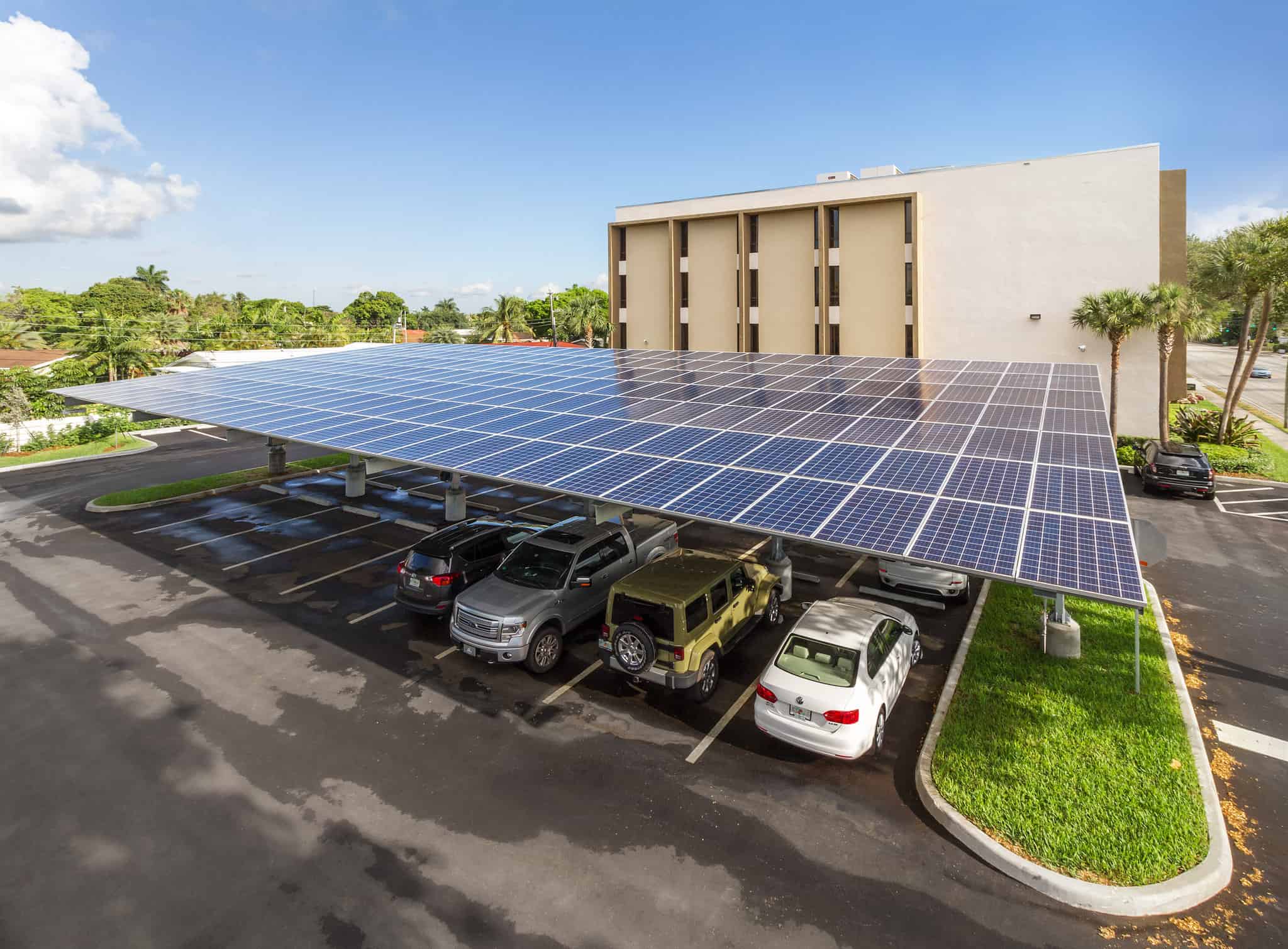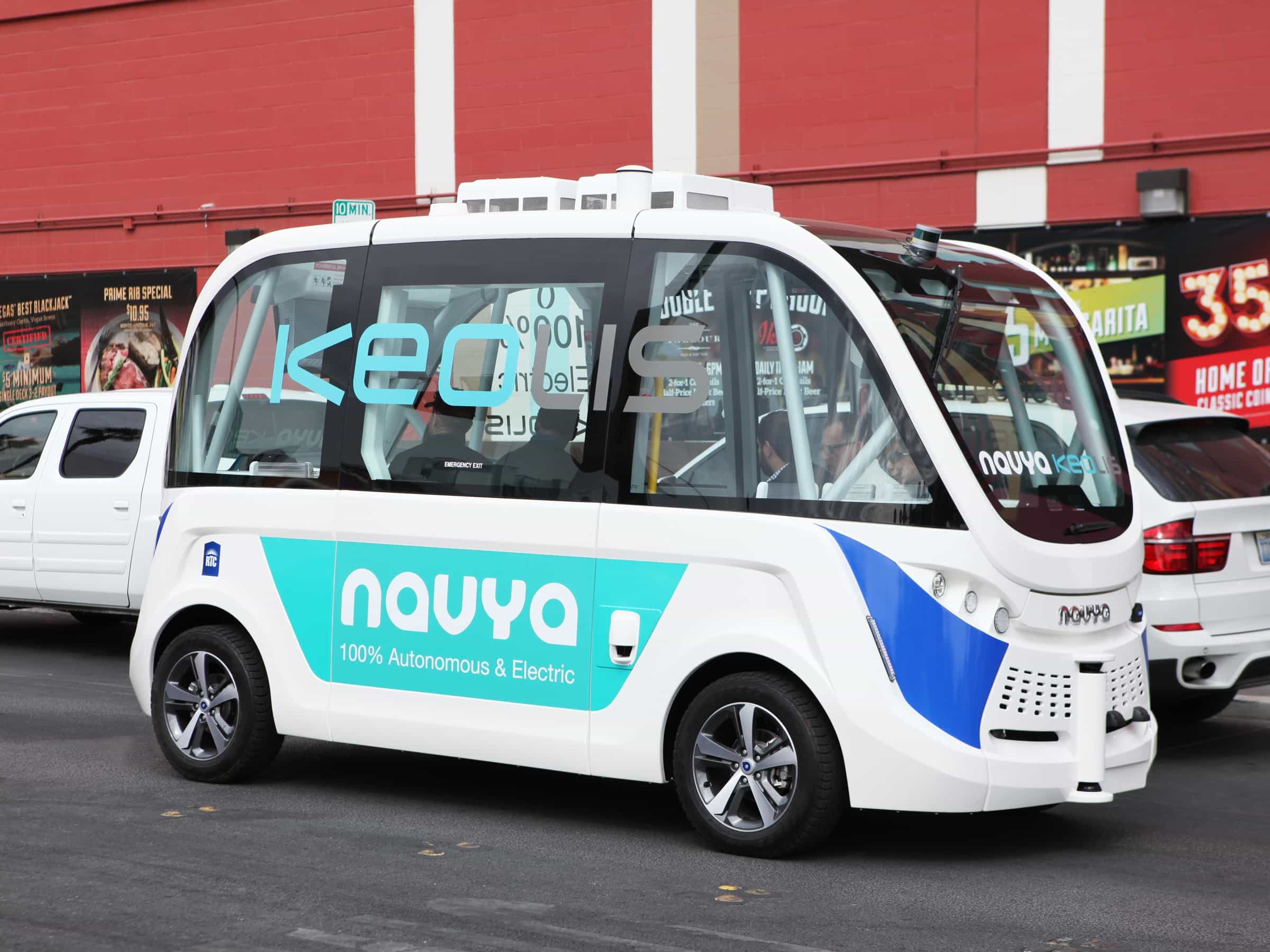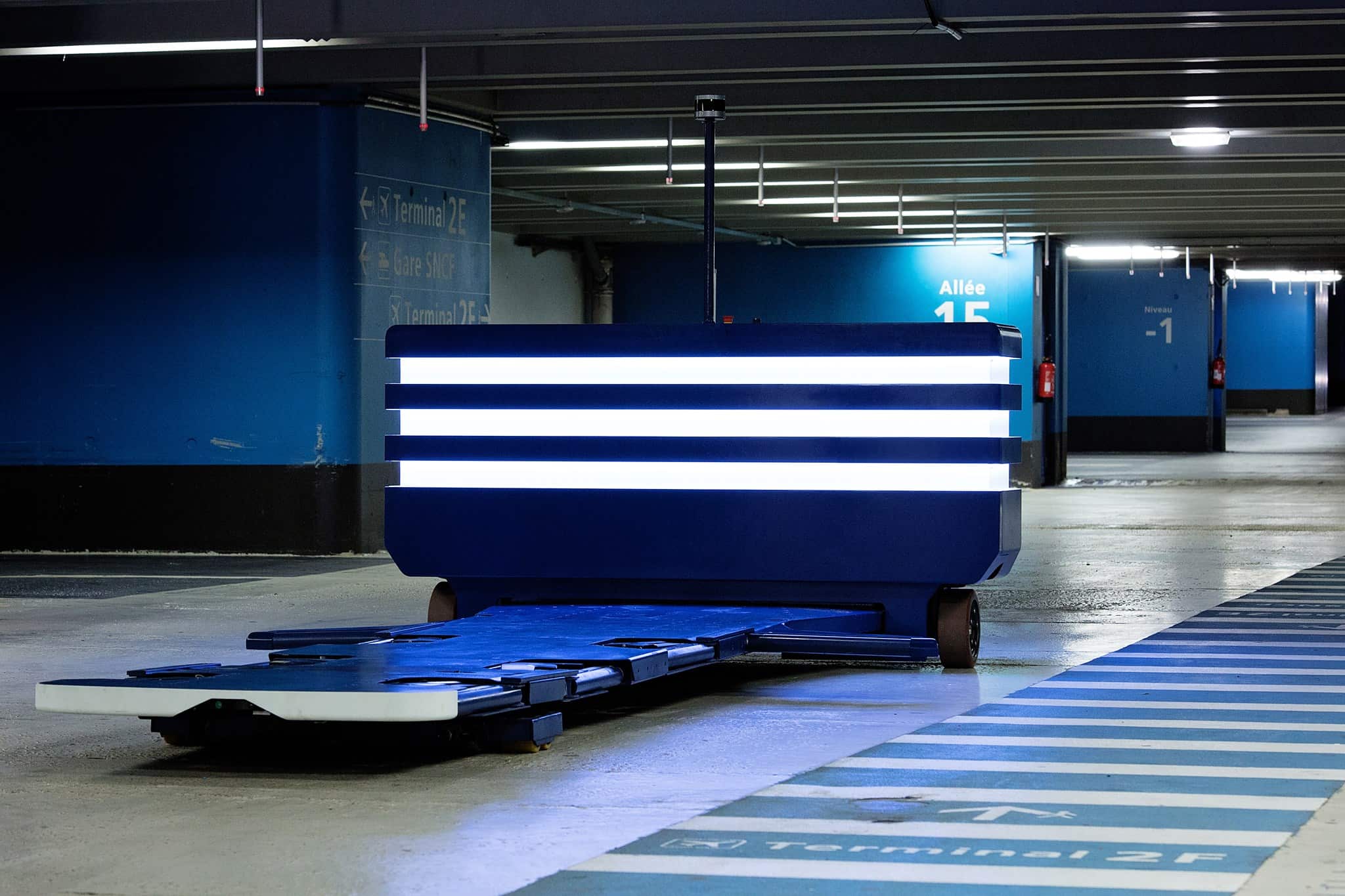Ever since the invention of the car, people have had to find ways to park as efficiently and unobtrusively as possible. But for decades, progress in this area was effectively at a standstill.
The rise of smart parking technology is finally ushering in a revolution in the way that this process is handled. But what is smart parking technology and how is its influence being felt today?
What is Smart Parking Technology?
Current approaches to parking can be frustrating for motorists who have to fight for a space at the end of a stressful journey. They are also wasteful in terms of the amount of land that is required to accommodate the ever-growing number of vehicles on the road.
Smart parking technology combines advanced software and automation to combat both issues. And there are already some impressive examples of how it can be put to use.

Vehicles can be shuffled and stored using automatic dollies which allow them to be stacked in close quarters and high densities. This tech has even allowed the creation of vending machine-style setups where people can buy cars, not just park them. We'll tackle this in-depth a little later.
Event the way that existing car parks are managed has become more convenient thanks to modern solutions. Digital systems designed to track customers via number plate recognition can make the need for tickets redundant. Meanwhile self-service kiosks ensure that the logistics of parking can be handled from start to finish by machines to save on operational costs.
So smart parking technology sets out to tear down the obstacles of traditional setups, and provide benefits for customers and businesses alike.
Green Parking
The carbon footprint of cars is being reduced as alternative fuel sources are embraced. And green parking technologies are forging a new path to make vehicles more eco-friendly even when they are stationary.

The planned rollout of solar power canopies at car parks in the UK is set to catalyse one of the main parking technology trends in the next decade. Rather than the sun's energy being uselessly absorbed by the tarmac, or creating uncomfortable warmth in vehicle interiors, it will be harnessed for practical purposes.
Charging up electric cars using these canopies will be one option. EVs can then be powered from a completely renewable source, rather than the national grid. The lighting of the car park will also tap into the solar panels to keep costs down for operators.
These canopies will often generate a surplus of energy, which can be captured by on-site battery arrays and then sold back to the grid to help power nearby businesses and homes. So the contribution of green parking technology will be felt far and wide.
Park Bus Technology
Park and ride services are common in big cities and around busy airports. At the moment they rely on standard buses to ferry visitors and passengers to and from their vehicles to help reduce congestion.

Evolutions in transport tech are allowing a new generation of buses to emerge. Cambridge in the UK is trialling self-driving shuttle busses as part of its existing guided busway system.
One of the advantages is that these buses will be able to operate around the clock, so employees will not need to work late and passengers can still get where they need to go in the evenings or early mornings. This could help enliven city centres and boost local economies, as well as having obvious benefits for airports where passengers are arriving and departing 24 hours a day.
The downside is that these buses can only hold up to 15 people at once, which does not make them ideal for operations during peak periods. They also pose a threat to jobs in the long run, although this issue is common across all autonomous vehicles designed for the commercial sector.
21st Century Parking Innovations
Perhaps the most famous example of modern parking technology trends appearing in the mainstream media came courtesy of Hollywood blockbuster Mission Impossible: Ghost Protocol.
The climactic scene takes place in an automated car park in India. But the technical crew actually built a replica in Vancouver, Canada for the purposes of filming. And inspiration was provided by the impressive car silos at VW's Autostadt visitor centre in Germany.
The underlying concept of these self-operating facilities is the same the world over; you create a large cylindrical structure from steel and concrete, with close-knit parking spaces arrayed around the outer edge. In the centre sits a lift mechanism which can reach the many layered levels, raising and depositing vehicles as they arrive, then retrieving them when the owner returns.
Belts, pulleys, slides and sensors all work together, with a central software suite controlling every aspect of the process.
Another innovation that has been added to these automated car parks in some cases is an inclusive washing system. This means that customers can park up, go about their day and come back to a sparkling-clean vehicle without having to wait around in person.
It's these small touches that make all the difference. And the flexibility of the technology means that new additions and optimisations can be made over time to further enhance the experience.
Automated Technology
A growing number of smart parking systems are cited as being the equivalent of a 'robotic valet parking', with end-to-end use of entirely automated processes making human employees unnecessary. And like a traditional valet, there are some limitations to consider.

For example, it can take up to five minutes for an automated system to retrieve a car. And if there are several people who require a vehicle at once, then there can be a bit of a queue. So even if the capacity of a parking structure is quadrupled thanks to smart tech, it is not entirely ideal in certain circumstances.
What may ease the strain on smart car parks is the emergence of self-driving cars. Some existing models can carry out parallel and reverse parking manoeuvres without the driver's involvement. And once full automation becomes mainstream, the possibilities are endless.
People will be able to drive to their destination, step out of their vehicle at the kerbside, and allow it to head off and park itself elsewhere. This is something that Audi has been championing, but many other manufacturers are also onboard with autonomous vehicle tech.
Self-driving cars can even squeeze into smaller spaces, with no human occupants needing to get out once the job is complete. So the car parks of the future could be even more compact.
Cities are set to be completely transformed by self-driving cars and smart parking systems. And while urban centres may not become entirely pedestrianised, the sight of crowded streets packed with parked vehicles and stuffed with slow moving traffic will soon be a thing of the past.
Smart parking technology is an exciting and diverse market, which might ultimately mean that traditional car parks are no longer necessary. Local authorities and businesses will need to work out what to do with the extra space that is freed up by this trend.
From public art galleries to creative performance spaces, many car parks have already been transformed to take advantage of the shifting landscape. And few people will be sad to see the end of the age of multi-storey mayhem.
